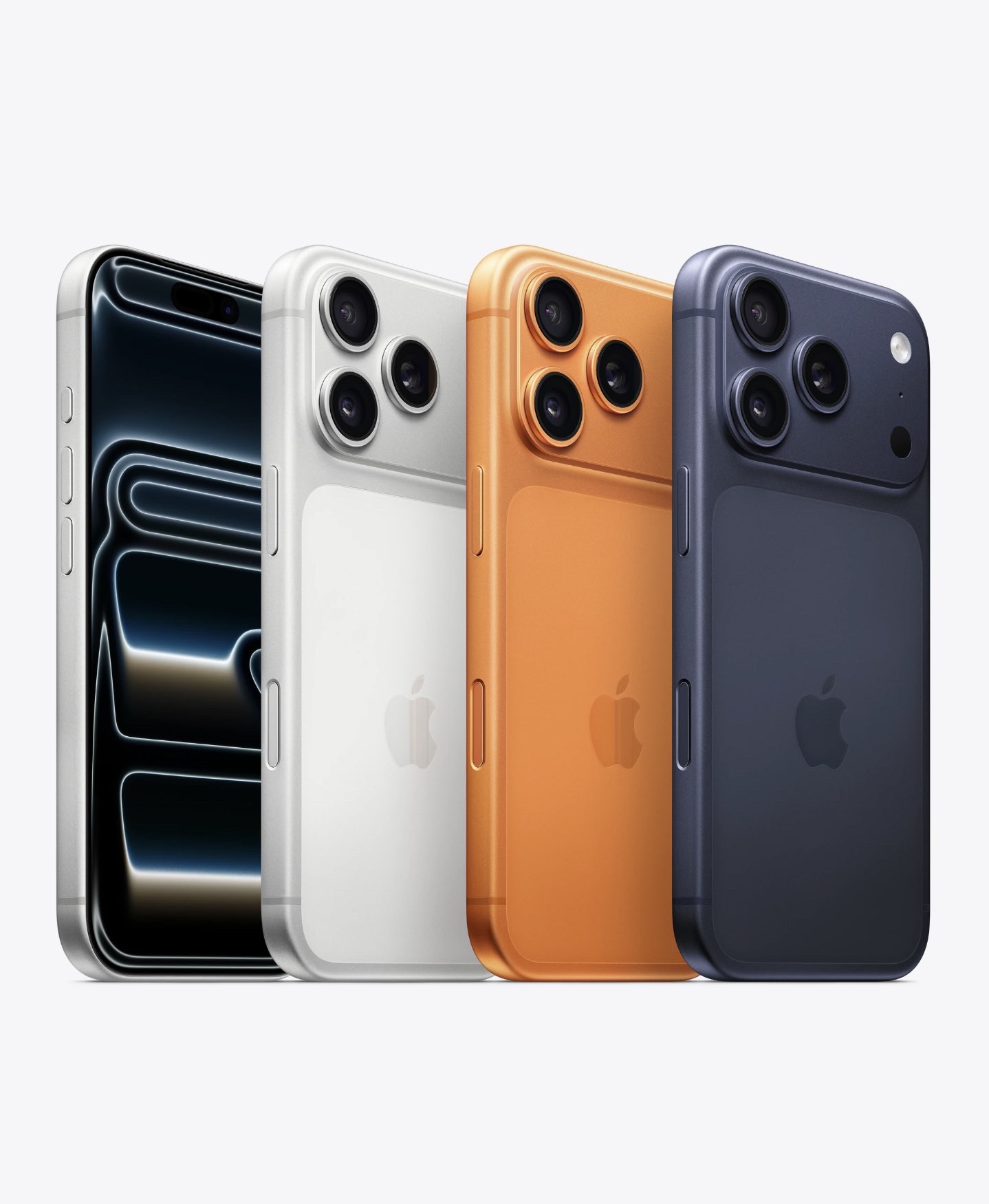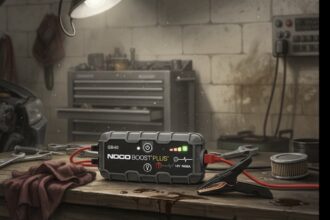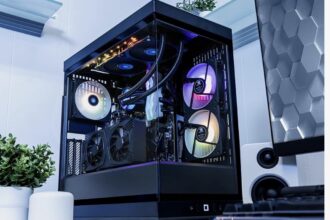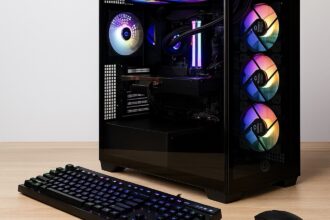iPhone 17 — Deep Review & Comparison: What Apple Changed and Why It Matters
Comprehensive, no-source review of the iPhone 17 family: iPhone 17 (base), iPhone 17 Pro, and iPhone 17 Pro Max. This page explains what’s new, technical trade-offs, how the 17 series compares to the iPhone 16 Pro / Pro Max, and practical advice on who should upgrade.
Executive summary — the short version
- The iPhone 17 family pushes several features that used to be “Pro-only” down to the base model: adaptive high-refresh (ProMotion) displays on the standard iPhone, dramatically brighter panels, and higher-resolution imaging hardware in more SKUs.
- Apple’s new A19 / A19 Pro silicon focuses heavily on on-device AI acceleration; the Pro chips add extra GPU and neural horsepower that benefit creative and computational tasks.
- Pro models received significant thermal and camera hardware improvements: redesigned internal layout with a vapor-chamber thermal solution and a new long-reach telephoto implementation on Pro Max.
- For most buyers the base iPhone 17 is now a much stronger mainstream upgrade; creatives and pro users will still prefer the Pro/Pro Max for sustained heavy workloads, optical reach, and the fastest wired transfer options.
What’s new in iPhone 17 — quick list
- New A19 (and A19 Pro) chips with larger neural accelerators aimed at on-device AI features.
- Base iPhone now gets ProMotion (adaptive 120Hz) and a much brighter display for improved outdoor and HDR viewing.
- Pro models use an updated internal layout with an aluminum unibody and a vapor-chamber thermal design for better sustained performance.
- Camera hardware refreshed across the line: higher-resolution sensors and a new telephoto solution on Pro Max for longer optical-quality reach.
- Apple introduced a new in-house networking chip that brings Wi-Fi 7 and newer Bluetooth/Thread capabilities to the lineup.
- Improved battery life claims and faster charging support when combined with compatible high-power adapters.
Design & materials
The iPhone 17 family retains Apple’s refined, minimalist aesthetic but includes purposeful internal and material changes. The base iPhone keeps durable front glass and thinner bezels, with modeling and finishes aimed at mass appeal. The Pro line moves away from the previous titanium-led feel toward an aluminum-based unibody paired with internal vapor-chamber cooling. This is a conscious trade-off: Apple sacrificed a small measure of ultra-premium exterior feel to gain thermal performance and internal space for bigger batteries and sustained workloads.
Display — a major value shift
One of the most impactful changes is display parity. The standard iPhone now has an adaptive high-refresh display and higher peak brightness, features that used to be reserved for Pro models. That means smoother scrolling, better perceived responsiveness, and significantly improved outdoor readability for non-Pro buyers. The Pro models retain the absolute top-tier brightness and dynamic HDR behavior, but the gap between base and Pro is narrower than in previous generations.
Performance & Apple Intelligence
Apple’s A19 / A19 Pro chips focus on two things: raw CPU/GPU performance and on-device AI acceleration. Everyday tasks feel snappy as you’d expect, but the meaningful gains are visible in AI-powered features and multi-task heavy loads. The A19 Pro’s additional GPU cores and larger neural engine give Pro models a clear edge for advanced photo processing, real-time AI effects, and graphics-heavy apps. Combined with Pro’s improved thermal headroom, the Pro models sustain peak workloads longer without throttling.
Camera systems — evolution and practical impact
Apple doubled down on computational photography while refreshing the optical hardware. The base iPhone adopts a higher-resolution main sensor and a higher-res ultra-wide, paired with a smarter front-facing camera for better auto-framing and clearer video calls. Pro models take this further with a triple 48MP array and a redesigned telephoto system that extends usable optical-quality reach substantially on the Pro Max. Real-world: daytime photos are excellent across all models, low-light imaging improves with combined sensor and computational gains, and Pro Max users gain clear advantages when photographing distant subjects or shooting professional-style content.
Battery life & charging
Apple reports notable battery improvements across the lineup. The base model sees better typical endurance thanks to efficiency gains in the A19 and a slightly larger battery; Pro Max benefits the most, with the highest-end endurance figures. Apple also pushed a faster charging path with updated adapter specs — to reach the fastest charging rates you need a compatible high-power charger. In everyday terms: most users will find battery life improved noticeably versus last year’s base and similar or improved on Pro Max, but maximal fast-charging speeds require new accessories.
Connectivity & data transfer
Apple’s new networking chip brings Wi-Fi 7 readiness and newer Bluetooth/Thread support to the iPhone 17 family. In practice, that means lower-latency wireless, better hotspot behavior, and higher ceiling throughput when paired with modern routers. However, there’s a practical nuance: wireless gains depend heavily on your router and local setup. Wired transfer speeds are still model-dependent — Pro models offer the fastest wired interfaces, while the base phone favors more modest transfer rates for most consumers.
iPhone 17 vs iPhone 16 Pro / 16 Pro Max — head-to-head
| Area | iPhone 17 (or 17 Pro) | iPhone 16 Pro / 16 Pro Max |
|---|---|---|
| Chip | A19 / A19 Pro — improved CPU and larger neural engine for on-device AI. | A18 Pro — still very fast, but A19 improves AI throughput and multitasking headroom. |
| Display | Base model now has ProMotion and much higher peak brightness; Pro models boost HDR and overall peak brightness. | ProMotion was Pro-only previously; peak brightness was slightly lower on base models. |
| Cameras | Higher-res sensors across the line. Pro Max adds a long-reach telephoto with extended optical-quality range. | Excellent camera systems; Pro Max already supported strong zoom, but 17 Pro Max pushes reach further with new processing and optics. |
| Thermals | Pro models use a vapor-chamber design and aluminum unibody to improve sustained performance. | Previous design favored premium exterior materials; sustained thermal performance was more limited under extended loads. |
| Battery & Charging | Improved advertised endurance across the line and faster charging support with compatible high-power adapters. | Strong battery life, but baseline figures are slightly lower than the new 17 figures in Apple’s claims. |
| Connectivity | New in-house networking brings Wi-Fi 7 and modern Bluetooth/Thread support. | Wi-Fi 6 and earlier Bluetooth versions; still solid but not the same theoretical headroom. |
| USB / Transfers | Pro models: fastest wired speeds. Base models keep more conservative wired transfer limits. | Pro models had fast wired speeds; base models were slower — pattern largely unchanged, though specifics differ this generation. |
Pros — where the iPhone 17 truly shines
- Feature rebalancing: Pro-level display and imaging traits make the base 17 much more compelling for mainstream buyers.
- On-device AI capability: A19 family accelerates Apple Intelligence tasks, making real-time smart features smoother and more practical.
- Camera versatility: improved sensors and computational modes yield better daytime and low-light imaging across the lineup.
- Better sustained performance on Pro models: thermal rework reduces throttling and improves heavy-use reliability.
- Future-ready connectivity: Wi-Fi 7 readiness and modern Bluetooth bring lower latency and improved wireless transfers when paired with newer routers.
- Battery & charging improvements: real-world endurance sees meaningful gains for many users.
Cons & trade-offs — what to consider carefully
- Two-tier transfer speeds: only Pro models offer the fastest wired transfer rates, which matters for creators who offload large files regularly.
- Material trade-offs: Pro moving to aluminum for thermal reasons may disappoint users who preferred the previous generation’s titanium feel.
- Wireless gains are conditional: Wi-Fi 7 benefits depend on your home network; without a modern router the practical improvement will be smaller.
- Charging caveat: the fastest charge speeds require new compatible power adapters; older chargers won’t achieve the top advertised numbers.
- Incremental vs transformative: if you already own a recent high-end iPhone (like a well-equipped 16 Pro Max), the upgrade is evolutionary rather than revolutionary.
Who should upgrade?
- Upgrade if: Your current phone is two or more generations old, or you want the improved display brightness, better battery, and upgraded cameras — the iPhone 17 delivers clear daily improvements.
- Choose Pro/Pro Max if: You are a content creator, need the longest optical-quality zoom, USB-3 wired speeds, and sustained peak performance for creative workloads.
- Wait if: You already own a 16 Pro Max and rely heavily on its telephoto and wired workflows; the 17 is an iterative improvement in many of those areas.
Real-world notes, gotchas and practical tips
- To get the fastest wired charging you will need a compatible high-power adapter that supports the manufacturer’s recommended PD spec.
- If you frequently move very large video files by cable, prefer a Pro model or consider high-speed wireless alternatives when your router and device support them.
- Maximum Wi-Fi 7 benefits require a Wi-Fi 7-capable router; otherwise you still get improved latency and reliability but not the absolute peak throughput.
- Watch storage tiers: with higher-resolution capture enabled, storage fills faster — consider larger capacity SKUs if you shoot a lot of 48MP/ProRes content.
Final verdict — who the iPhone 17 family is for
The iPhone 17 lineup is a textbook example of feature rebalancing done well: Apple brought several formerly Pro-exclusive capabilities into the mainstream product, making the base iPhone dramatically more compelling for typical users. This realignment improves the everyday experience — brighter screens, smoother animation, better photos, and longer battery life — at relatively modest incremental cost.
That said, the Pro and Pro Max remain the clear choice for heavy creators and power users who need top-tier telephoto reach, the fastest wired transfers, and the sustained performance that the new thermal design enables. If you own a recent Pro Max and rely on its unique capabilities, the 17 Pro Max is an evolutionary upgrade that refines many pain points, but it is not necessarily a must-have for every Pro Max owner.








